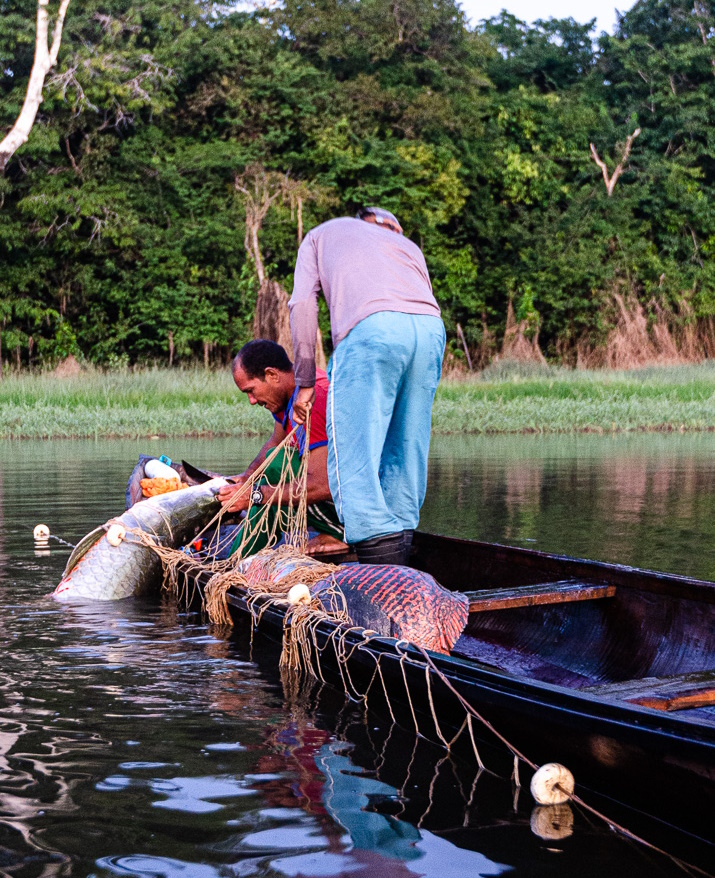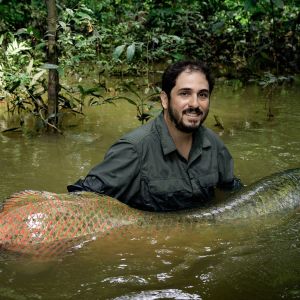In Brief
Conservation Value:
Sand beaches along the river Juruá are important for the reproduction of threatened or overexploited species, including the giant South American river turtle (Podocnemis expansa), yellow-spotted river turtle (Podocnemis unifilis), and six-tubercled Amazon river turtle (Podocnemis sextuberculata). These fluvial beaches also support breeding areas for the Orinoco goose (Neochen jubata), black skimmer (Rynchops niger), large-billed tern (Phaetusa simplex), migrants such as sandpipers and osprey (Pandion haliaetus) and other specialty species. Indeed, this is a proiority area of the Amazon for many resident and migrant bird species.
The many oxbow lakes provide critical habitat for the reproduction of fish, notably pirarucú (Arapaima gigas), and feeding sites for turtle hatchlings and waterbirds. Other large aquatic vertebrates that we are protecting are black caiman (Melanosuchus niger), Amazonian manatee (Trichechus inunguis), giant otter (Pteronura brasiliensis), and amazon river dolphin (Inia geoffrensis)
Threats:
Illegal fishing and poaching are the main threats.
Actions & Results:
In 2024, ICFC’s partner Instituto Juruá held meetings with 60 local communities, leading to the inclusion of 69 new protected oxbow lakes in Itamarati municipality, in Amazonas state. It consolidated and reinforced fishing agreements in Carauari municipality to protect another 120 oxbow lakes, benefitting 60 rural communities along the Juruá River. These agreements are essential for maintaining sustainable fishing practices and safeguarding the integrity of the region's aquatic ecosystems. Working with local Kulina indigenous communities resulted in the implementation of spatial zoning for fisheries, which involved mapping critical fishing areas where commercial fishing will be prohibited. This enhances the governance and social organization of the Kulina, which strengthens their territorial claims and helps them guard their territory against illegal fishers and poachers. The long-term goal is official recognition of Kulina territories, which span 600,000 ha. Lastly, as part of Instituto Juruá’s efforts to build local knowledge and skills, they provided training in fair trade certification, turtle management, and territorial protection to 370 local people.
Goal:
To extend the community-based protection of fluvial beaches and floodplain lakes to conserve aquatic biodiversity.
Support this projectLocation:
Juruá River, Amazonas, Brazil
Size of Area Involved:
~2,500 km of Jurua river and community-based protection spanning ~200,000 hectares

Fishing for pirarucu must be carefully managed due to the species' high value and vulnerability. This air-breathing fish is the largest scaled freshwater fish in the world, reaching over 3 m in length and over 220 kg in weight.
Project Field Partner:
Our Investment to Date:
Cost to ICFC (2023-2024): CA$112,494 (ongoing in 2025)
Gallery
Click to enlarge an image
In More Depth...
International Conservation Fund of Canada Copyright © 2009-2025
Registered Canadian charity # 85247 8189 RR0001














